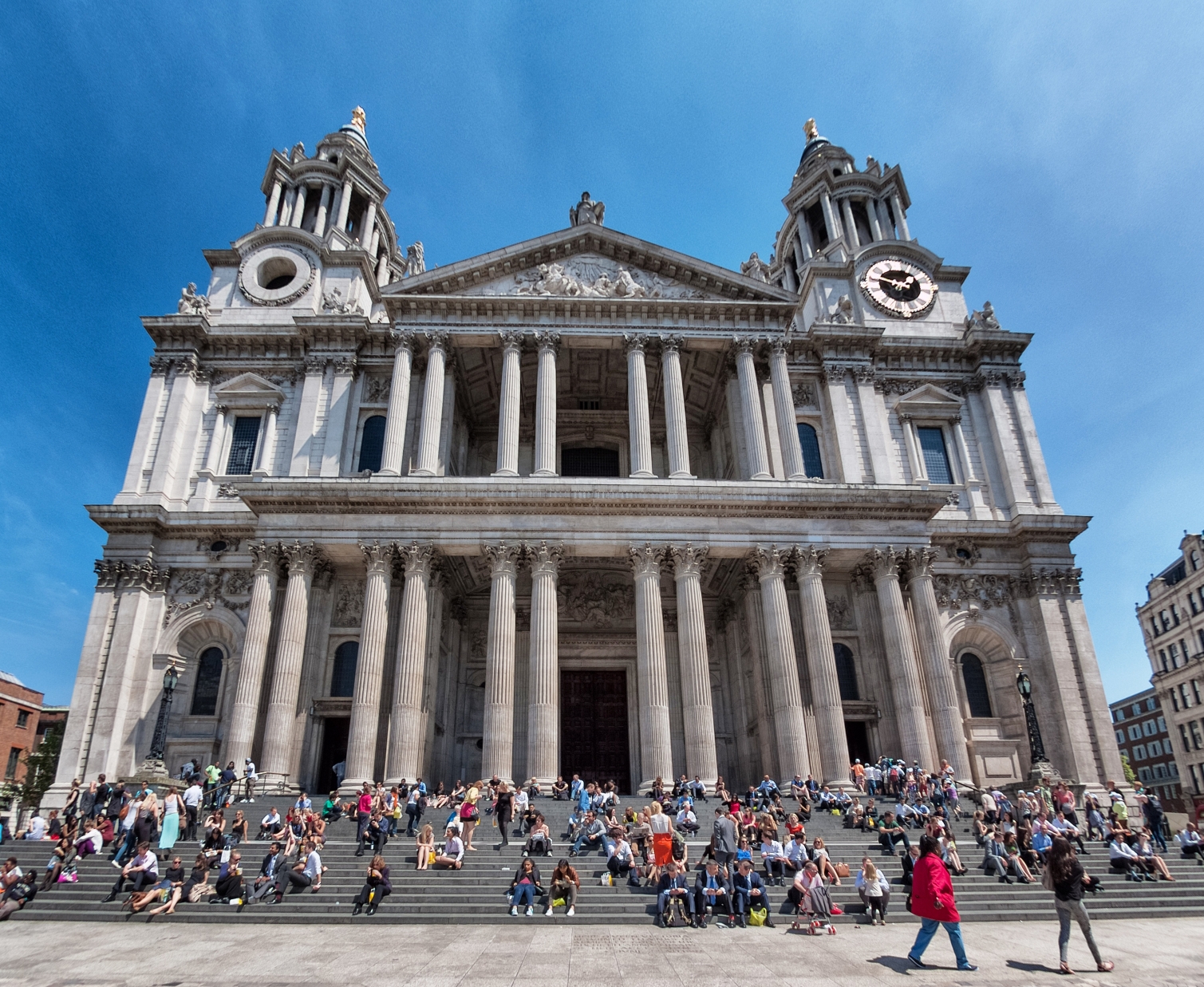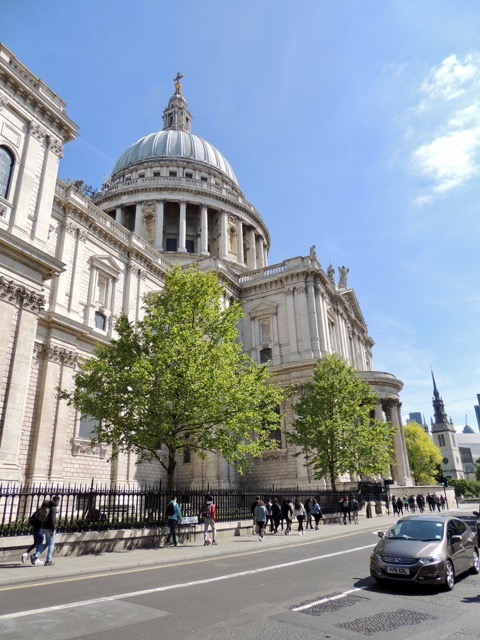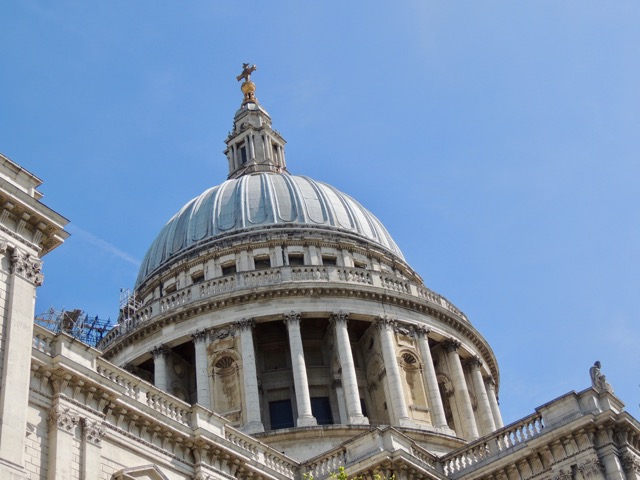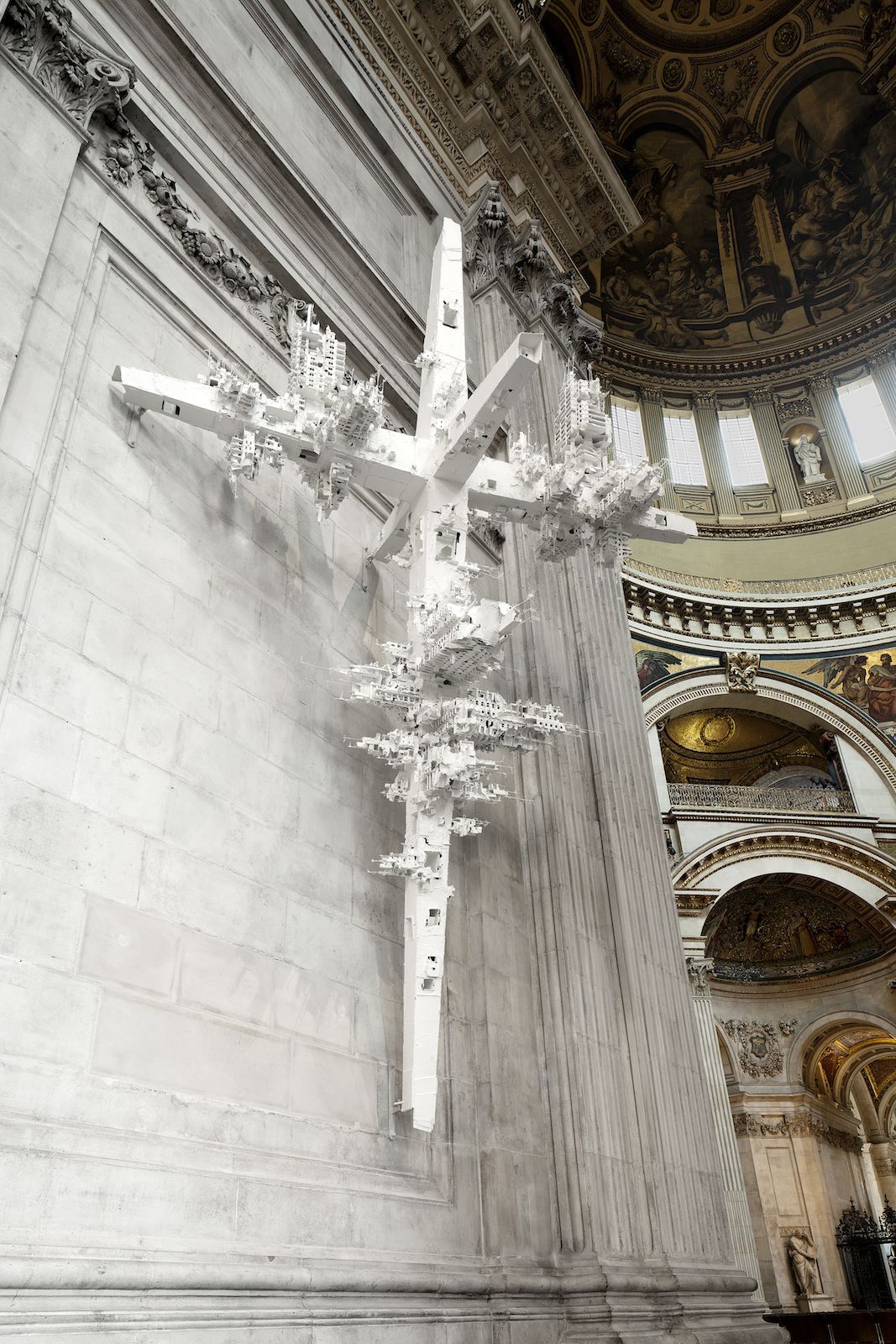Difference between revisions of "St. Paul's Cathedral"
From Londonhua WIKI
| Line 47: | Line 47: | ||
</gallery> | </gallery> | ||
<br> | <br> | ||
| − | + | ===The Grand Organ=== | |
| + | The Grand Organ was build in 1695, with its case built by Grinling Gibbons. It is the third largest organ in the UK with 7,189 pipes, 5 keyboards, and 138 organ stops. Although it has been moved, it originally formed a screen seperating the nave and quire areas. | ||
| + | <br> | ||
== Whispering Gallery == | == Whispering Gallery == | ||
The Whispering gallery is the first of the three levels of the Dome and circles around its interior. It is 30 meters or 257 steps from the cathedral floor and looks over the floor below. From there, one can see the mosaics on the top of the dome very well. Its name, the "Whispering Gallery", comes from the interesting construction feature that allows for two people to hear each other from opposite sides by whispering against the wall. <br> | The Whispering gallery is the first of the three levels of the Dome and circles around its interior. It is 30 meters or 257 steps from the cathedral floor and looks over the floor below. From there, one can see the mosaics on the top of the dome very well. Its name, the "Whispering Gallery", comes from the interesting construction feature that allows for two people to hear each other from opposite sides by whispering against the wall. <br> | ||
Revision as of 15:37, 11 May 2017
St. Paul's Cathedral
 Western View of St. Paul's | |
| Architect | Christopher Wren |
|---|---|
| Year | c. 1675 |
| Location | St. Paul's Cathedral, London |
| Photo Credit | St. Paul's |
Overview
St. Paul's Cathedral, which stands in central London, is the cathedral of the Anglican bishop. It is the most recent in a line of cathedrals to have been built on Ludgate Hill and dedicated to St. Paul. Throughout history, it has also been known as the Nation's Church.
Contents
Background
St. Paul's Cathedral was built between 1675 and 1710, following the destruction of the previous cathedral in the Great Fire of London in 1666. St. Paul's design is a combination of Neoclassical, Gothic, and Baroque elements, making it unique amongst the Great Cathedrals. Another feature that distinguishes St. Paul's from other cathedrals is its dome,which an unusual structural element to find on an Anglican church. The cathedral is generally partitioned into three sections; The main floor, the crypt, and the dome galleries.
Architecture of St Paul's Cathedral
St. Paul's Cathedral was designed by Christopher Wren to replace the old Medieval style cathedral that burn down in the fire of London in 1666. Christopher Wren decided to go with English Baroque style, making St. Paul's the first non-medieval styled church on London. This caused tension from Londoners that the church looked too Catholic, and the original design was rejected. The Cathedral's main floor is divided into five sections; the Nave, the Dome, the North and South Transepts, and the Quire.
The Nave is the longest section of the Cathedral. From above, a crossed is formed relating to the cross where Jesus was crucified and died. At the far end is the most sacred place, the high alter, which faces the sun so every day the sun rises and symbolizes the birth of a rebirth.
The North and South Transepts were originally meant to be longer. That design got rejected and they were made shorter in order to make the building appear like a cross from the outside.
The Quire houses the organ and a monument for those who died in World War I. along with the Bishops
The Cathedral also has a Crypt, and access to all of the levels in the dome.
The Dome
The dome, like in most churches was designed to draw the eyes upwards and towards the heavens. The purpose of the dome is to be the central heart of the Cathedral. St. Paul's is the only English Cathedral with a dome. Underneath the main dome there are 8 high arches and four quarter domes. The quarter domes have mosaics that show the death and resurrection of Jesus. One interesting twist the artist took was in how he showed the scene of Jesus' death. He has Jesus on the cross, but coming from behind him is the tree of life. The mosaics were done by William Blake Richmond. The exterior height of the dome, including the stone lantern is 111 meters high. However, Christopher Wren used the empirical measurements which gives it a height of 365 feet, one foot for each day of the year. Wren wanted to make the dome look large form the outside but not out of proportion on the inside. In order to do this he had to use visual tricks. The dome had three components to it, the inner dome, the structural cone, and the outer dome. When you look up you notice everything slopes inwards, this allows the inside of the dome to not feel out of proportion. When Wren places the stone lantern on top, it will put pressure on the dome structure pushing it outwards. In order to solve this problem, Wren places large iron chains, to support the heavy weight up top.
The Grand Organ
The Grand Organ was build in 1695, with its case built by Grinling Gibbons. It is the third largest organ in the UK with 7,189 pipes, 5 keyboards, and 138 organ stops. Although it has been moved, it originally formed a screen seperating the nave and quire areas.
Whispering Gallery
The Whispering gallery is the first of the three levels of the Dome and circles around its interior. It is 30 meters or 257 steps from the cathedral floor and looks over the floor below. From there, one can see the mosaics on the top of the dome very well. Its name, the "Whispering Gallery", comes from the interesting construction feature that allows for two people to hear each other from opposite sides by whispering against the wall.
Stone Gallery
The Stone Gallery is the second highest gallery in the cathedral, above the Whispering Gallery and below the Golden Gallery. It is 53 meters from the Cathedral Floor and about 376 steps. Currently closed.
Golden Gallery
Golden gallery is the top of the Dome, and is 85 meters from the Cathedral Floor, about 528 pages. It is a great gallery to capture the views of the surrounding landscape including The Barbican, The Gherkin, The Lloyds Building, The Shard and Waterloo Bridge. Currently closed.
The Crypt
The Crypt constitutes the bottom floor of St. Paul's Cathedral. It holds many different tombs, Oculus, memorials, and The Chapel of St. Faith's. One section of the tombs is referred to as the Artist's Corner. Here lies the tomb of Sir Edwin Henry Landseer, Sir Joshua Reynolds, William Holman Hunt, JMW Turner and John Everett Millais. Landseer was buried here due to his famous sculptures, most notably the lions in Trafalgar Square. Reynolds not only is buried here, but has a statue in honor of him which is under the dome. Hunt painted the Light of the World which is on display upstairs. Turner, most notably known for his England landscapes and capturing how light works, requested to be buried near Sir Reynolds who he admired. Millais, founder of Preflight Brotherhood, focused his artwork on returning back to detail in complexity and intensity in medieval art.
Art Installations
Sculpture
The Cathedral's sculptures, along with the other works of art within the walls of Saint Paul's, all seek to tackle the human experience as well as Christianity within a single contained work. Mother and Child, sculpted by Henry Moore, skillfully distils both primal concepts of motherhood and the virgin Mary cradling the infant Christ utilizing only marble abstraction as a medium. Gerry Judah's Commemorative Crosses, as a Great War commemorative sculpture, juxtaposes the familiar Christian cross associated with the suffering of Christ against crude plaster reconstructions of devastated urban buildings. As a whole, Saint Paul's Cathedral's Sculptures reshape and deftly inform such a space that otherwise appears deeply rooted in past tradition. These pieces expose and propagate awareness of a more present context and the issues people of today face within that.
Mosaics
Mosaics cover the ceiling of the Quire at St. Paul's. They only cover this portion of the cathedral because they were not part of Christopher Wren's original plan. The Quire mosaics were added between 1891 and 1904. They were designed and headed up by William Blake Richmond. Richmond's father was a painter. He followed a bit in his father's footsteps, studying art in Italy. He had long been planning and designing large scale stained glass windows and mosaics before St. Paul's gave him the opportunity to put these designs to the test.
Video Installations
St. Paul's Cathedral is the first to permanently exhibit video art. The video, "Martyrs" was created by Bill Viola, an American. The goal is to reach a wide audience as people of all walks of life and faith visit the cathedral. It is meant to speak to a person's faith and conscience. In a world filled with speed and people rushing, Viola slows down the videos to create a sense of drama and deeper awareness of the action. Christian symbols are called upon in the videos. In the rightmost video, the man hanging upside down resembles St. Peter being crucified. The man covered in soil can represent Adam. At the same time, these images are supposed to display the way that some people today are still being persecuted and killed for their beliefs.
References
If appropriate, add a references section
External Links
If appropriate, add an external links section
Image Gallery
If appropriate, add an image gallery



